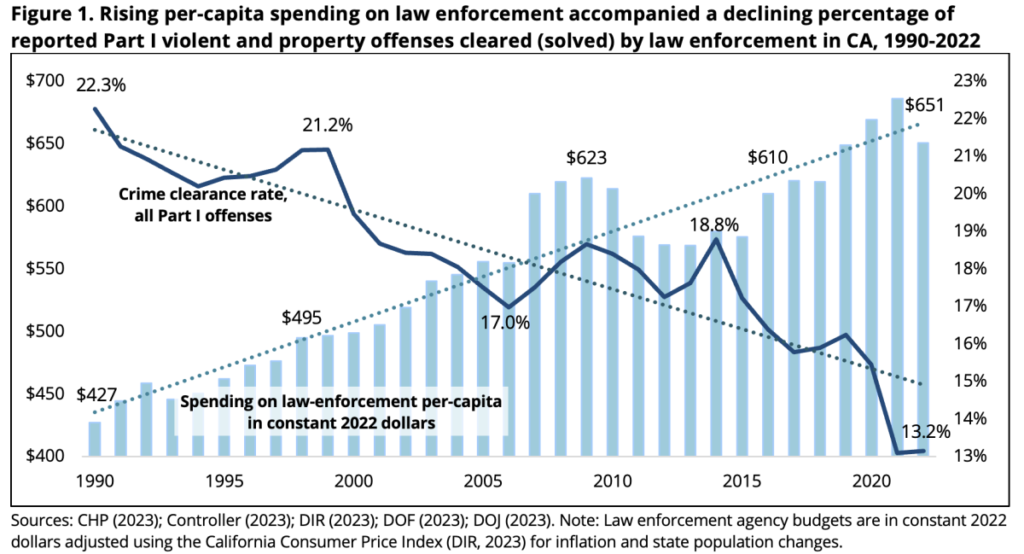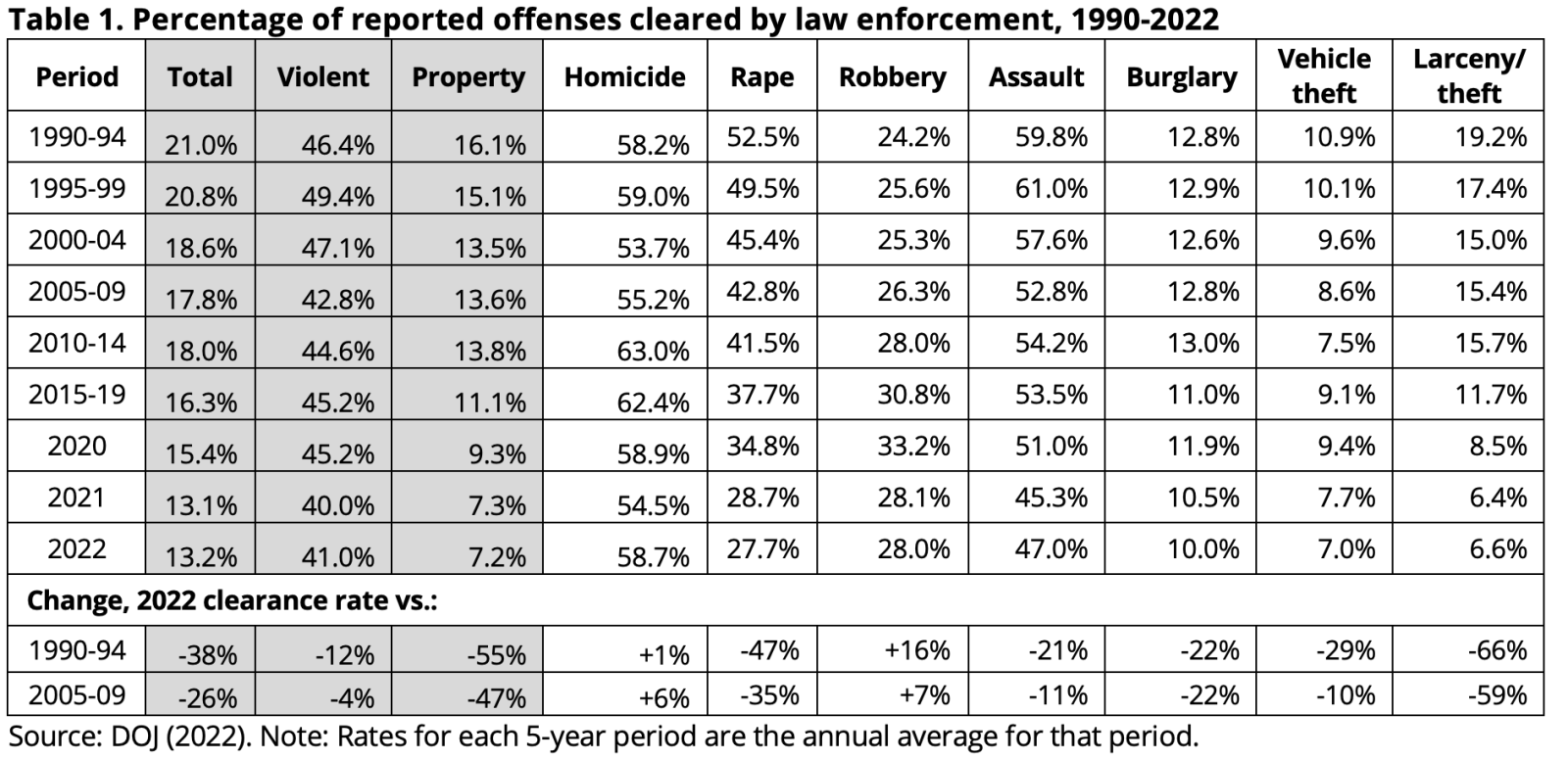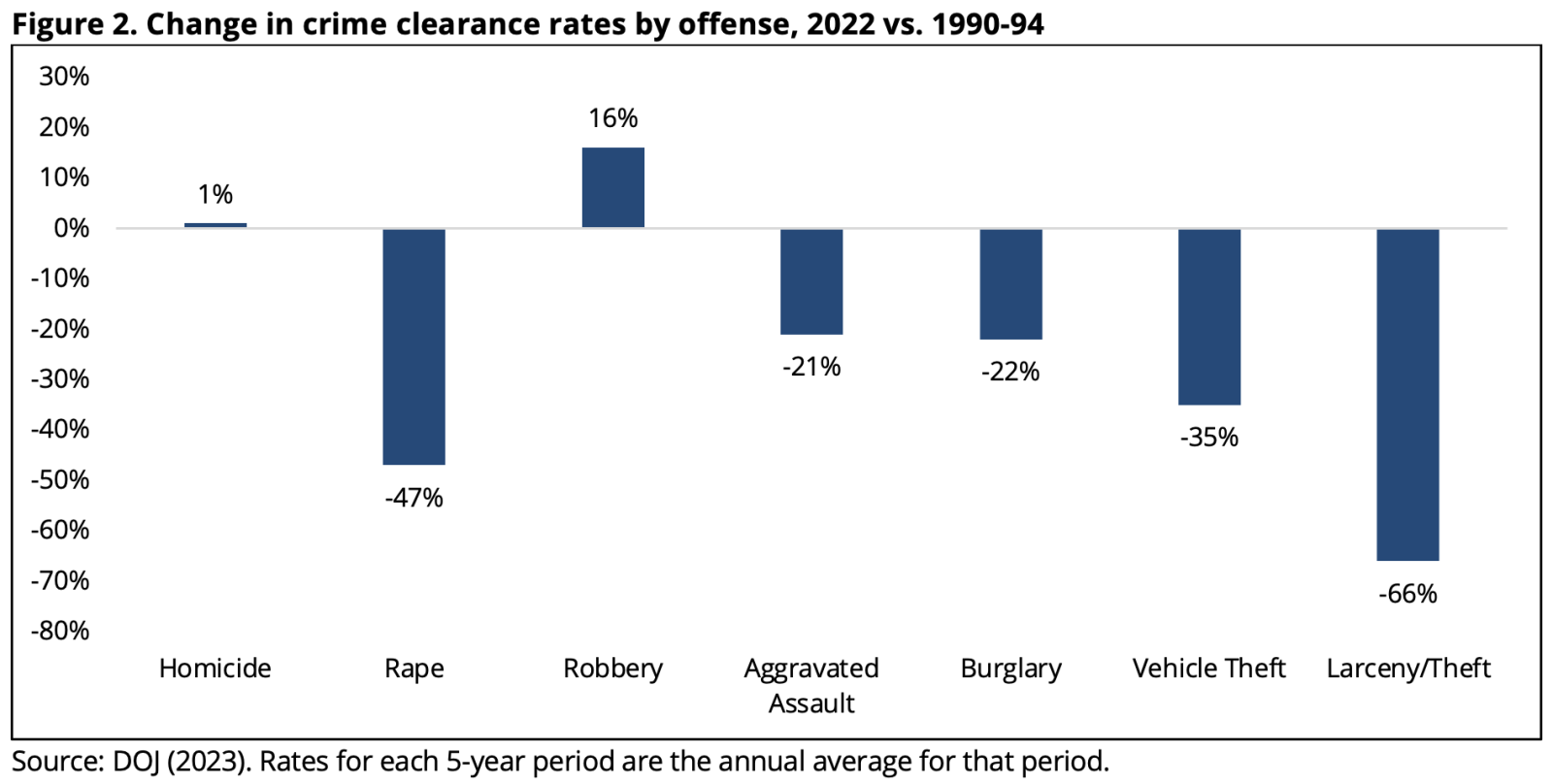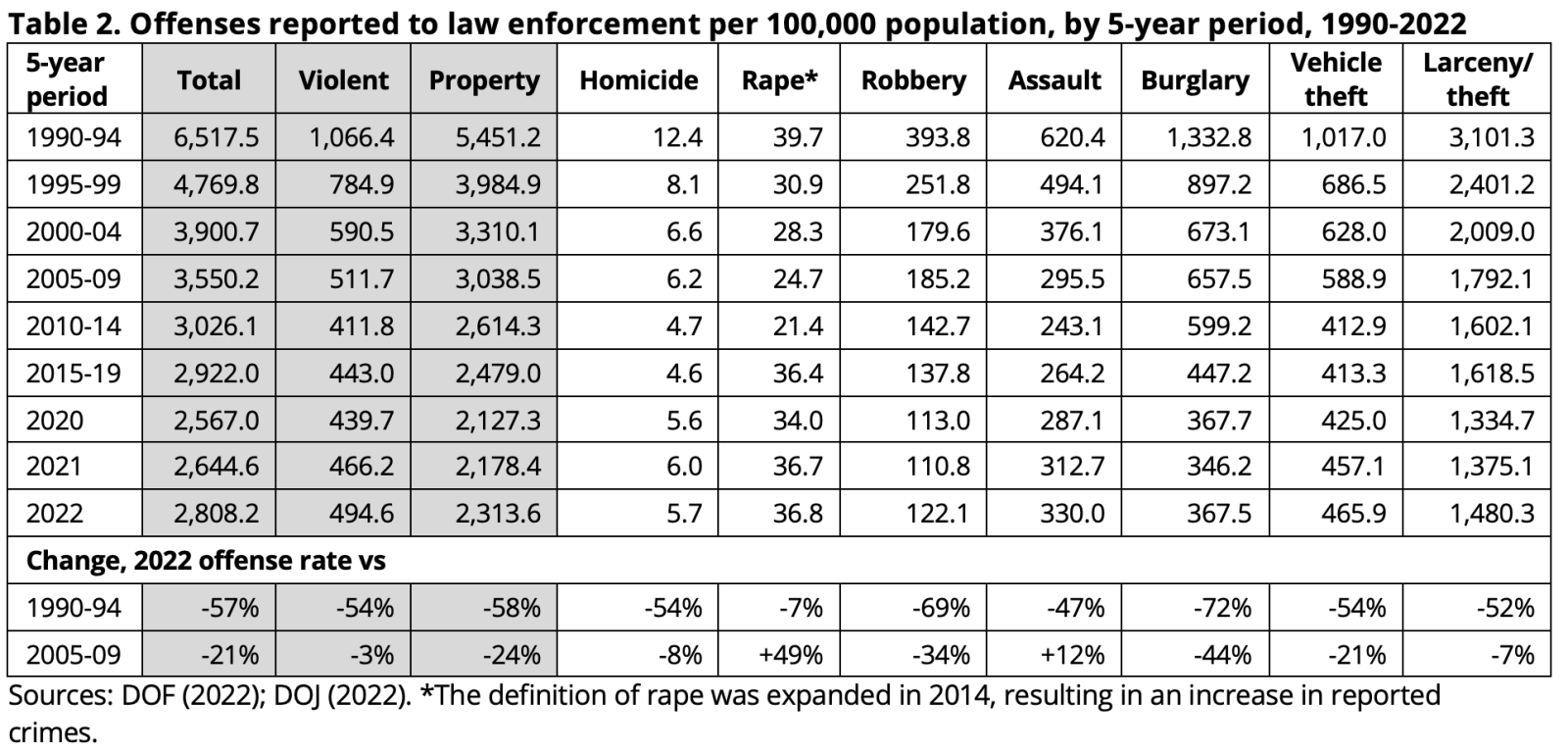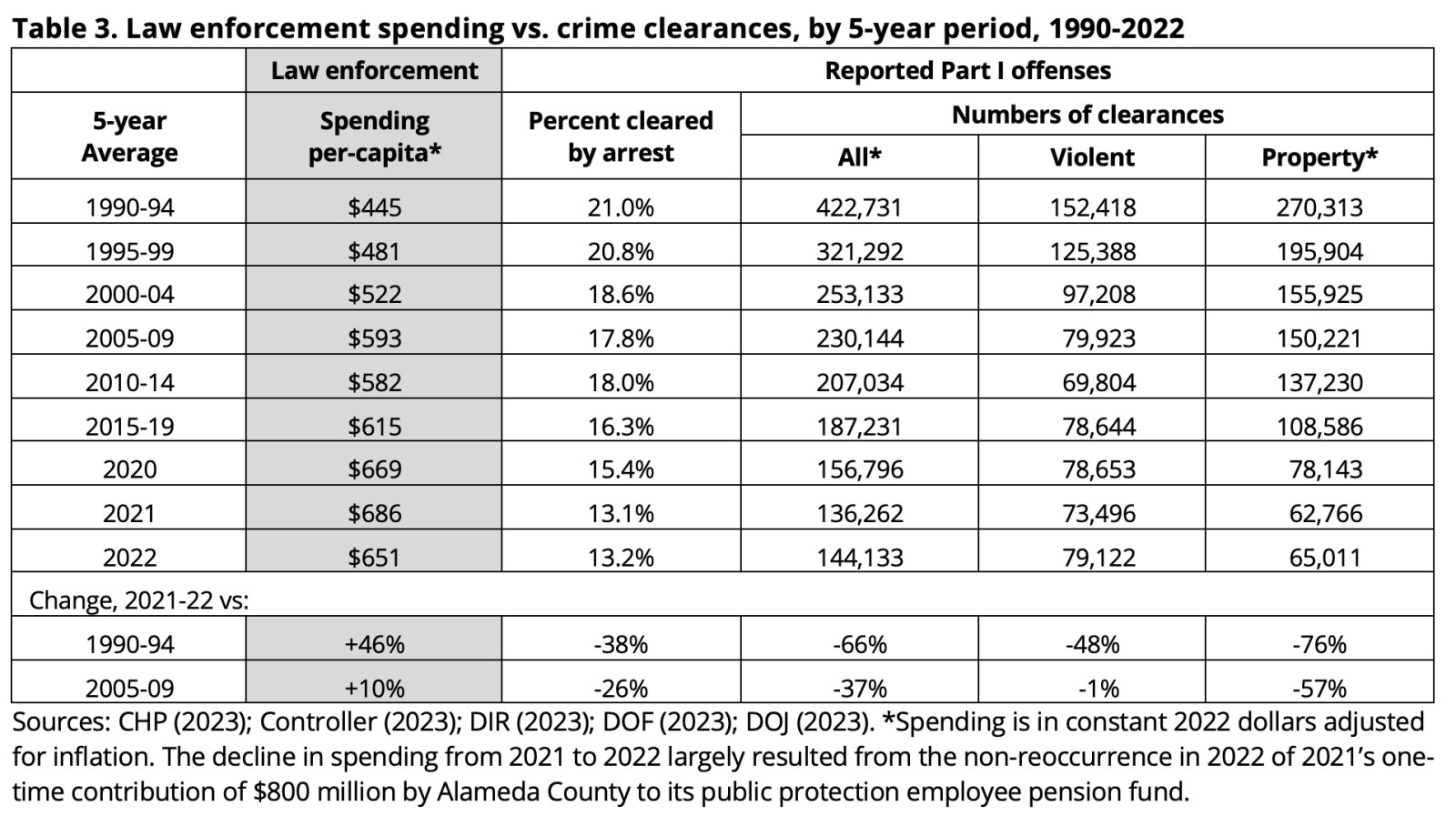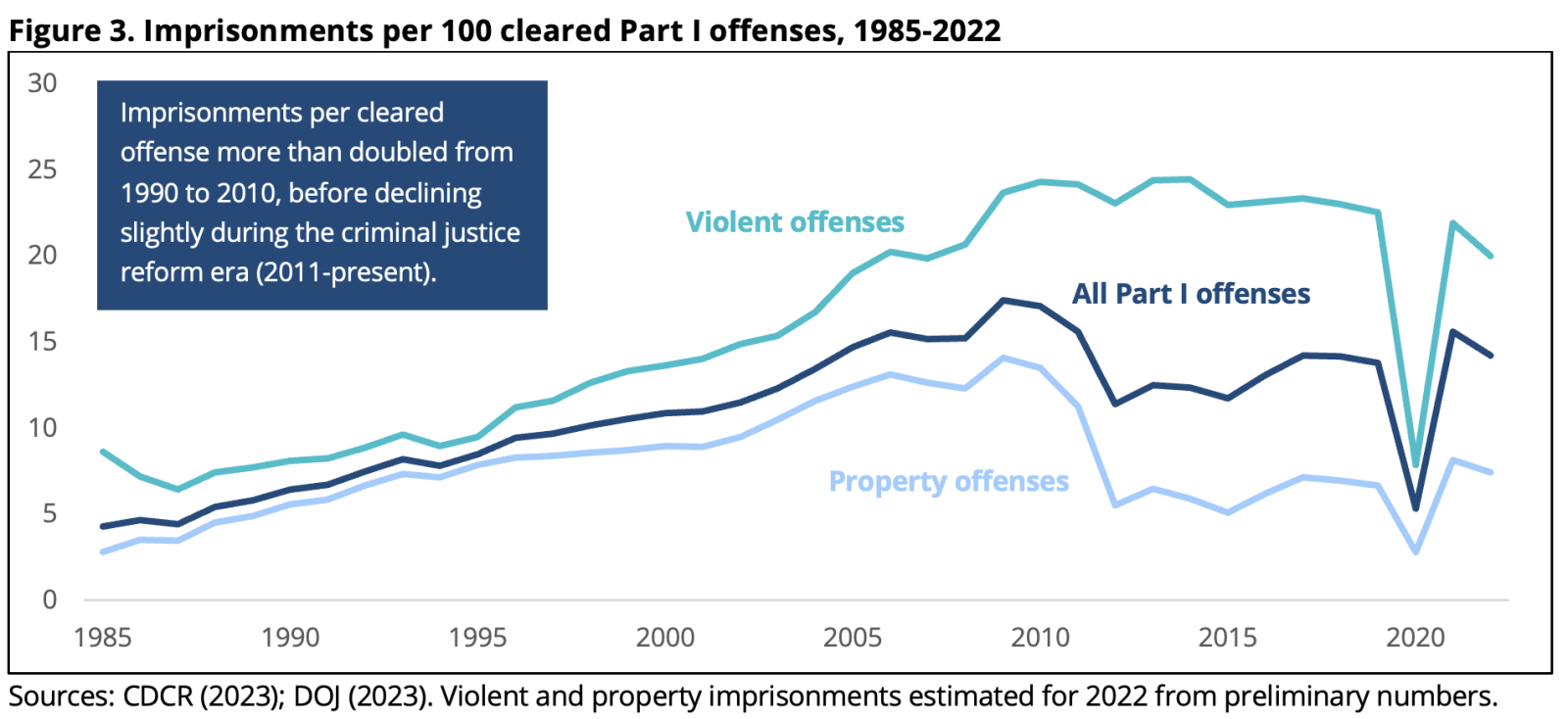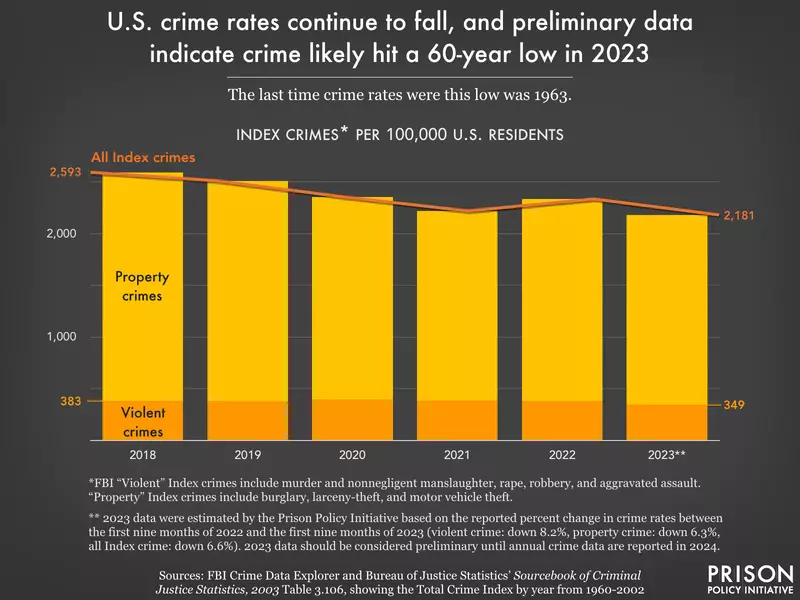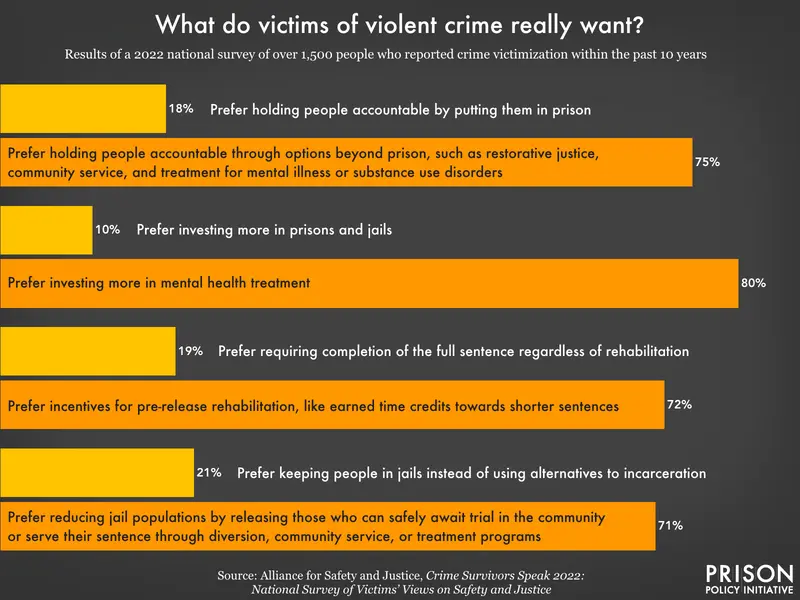As our partner organizations around the country decry this resurrection of bad policy, we looked at recent legislation passed around the country to identify trends in this most recent crop of throwback laws. In this briefing, we present some of the most common kinds of tough-on-crime laws passed in 2023and the best arguments against them, so that advocates can be ready if these trends appear in their state.
Renewing the War on Drugs
In recent years, substantial progress has been made to address and begin to reverse the harmful policies from the War on Drugs. The authors of these policies, passed between the 1970s and 2010s, created draconian mandatory minimum sentencing laws, established a racist sentencing disparity between crack and powder cocaine, and led to the incarceration of millions of people. Despite spending billions each year to enforce these policies, the drug war has not reduced drug use rates, drug prices have dropped, and overdose deaths have risen. Based on our experience with the Drug War, there is no reason to think that arrest and incarceration can stop drug use or trade.
Fentanyl now permeates the United States drug market, leading to higher risks of overdose. Experts and advocates consistently urge a public health approach to fentanyl, but, unfortunately, too many states are treating it as “Crack 2.0“, pursuing the same failed policies that sent millions of people to prison. This includes penalty enhancements for both possession and distribution of fentanyl and increased penalties for homicide charges leveled against people who provide drugs to a person who subsequently dies of an accidental overdose – often called “drug-induced homicide” laws. These laws are often levied against people using drugs together, who may or may not know that fentanyl is present in what they are using.
This year, a number of states passed laws resurrecting failed war on drugs policies:
- Alabama (HB 1) created mandatory minimums for possession of fentanyl. This bill was especially concerning because it passed the legislature unanimously, suggesting that there was no meaningful debate about whether the policy would be effective.
- Iowa (HB 595) increased penalties for both possession and distribution of fentanyl.
- Wisconsin (AB 68) increased penalties to 60 years for reckless homicide involving delivering fatal drugs. The law would apply to people using drugs together.
Arizona and the federal government have also come close to passing retrograde drug legislation. Arizona’s legislature passed a presumptive 10 year mandatory minimum sentence for possession of as little as 2 milligrams of fentanyl; that bill was vetoed by the governor. At the federal level, the HALT Act would trigger new and increased mandatory minimum sentences for fentanyl; it has passed the House and currently sits in the Senate.
Fighting back against zombie drug policies
Advocates facing regressive drug policy changes have the benefit of decades of research showing that these policies do not work, have never worked, and cause massive harm to communities.
First, advocates can rely on the mountain of evidence showing mandatory minimums and longer prison terms do not reduce crime, drug use, or overdoses. Families Against Mandatory Minimums has compiled a wealth of resources on sentencing reform, including a handy guide to arguments against mandatory minimums. They argue that mandatory minimums create racially biased outcomes – Black people are 65% more likely to face mandatory minimum charges. Advocates can also point to the ways that lengthening prison sentences will expand prison populations in the long run.
Second, advocates can educate lawmakers on how carceral approaches fail to address the fentanyl crisis. In particular, many lawmakers believe that jails and prisons will provide treatment for opioid users – in fact, incarceration increases overdose risk, and few people receive treatment inside. Policymakers also believe they can target drug dealers with harsh penalties without harming people who use drugs. In fact, drug users and drug suppliers are most often the same people; sentencing enhancements are unlikely to affect so-called drug “kingpins” and will more likely target users and low-level sellers. Drug Policy Alliance has a great video on this subject.
Lastly, advocates can provide lawmakers with alternatives to these carceral policies. Kneejerk penalty increases are often the product of a desire to “do something” about the very real devastation that fentanyl and overdoses are wreaking in communities across the country. But doing things differently during this overdose crisis means taking a public health approach to drug use. Drug Policy Alliance has created a comprehensive toolkit on such health-centered approaches, including increasing access to treatment and harm reduction approaches like safe consumption sites and fentanyl test strips.
Criminalizing the homeless
The United States has a long history of responding to the problem of homelessness with criminalization and punishment. Homelessness has risen in recent years, driven by economic factors like increased housing costs, as well as by the COVID-19 pandemic.
As concern about homelessness rises, some jurisdictions are trying to criminalize their way out of a problem that can only be addressed with social services and housing.
- In Georgia (SB 62), the state legislature passed a law requiring that municipalities enforce anti-camping laws.
- Alabama (HB 24) expanded the definition of loitering to encompass more unhoused people.
Arizona also came disturbingly close to passing similar policies. A vetoed bill in Arizona (SB 1024) would have created an anti-camping law, and two other bills proposed further criminalized homeless encampments but failed.
There are dozens of ways that policymakers have targeted people experiencing homelessness. In 2021, the National Homelessness Law Center published a guide to laws around the country criminalizing homelessness; they note that as of 2021, almost every state has at least one law restricting behaviors associated with the experience of being homeless.
Protecting unhoused people from backwards policies
There’s no denying that rising housing insecurity is a genuine concern. Unfortunately, the solutions are complex, and can’t be solved by simply outlawing living outside. Advocates can help lawmakers understand the feedback loop between criminalizing homelessness and increasing mass incarceration. Further criminalizing homelessness is likely to increase jail populations – and jails are ill-equipped to address the poverty, mental health, and substance use related reasons why people are experiencing homelessness. The National Homeless Law Center’s comprehensive guide notes that criminalization harms the health and wellbeing of unhoused people, and is an extremely expensive reaction to homelessness. Incarcerating someone costs over $47,000 a year; a week in a jail cell might cost the equivalent of a month or more of housing.
Advocates can also help lawmakers find and implement successful, humane, and non-carceral approaches to this crisis. “Housing First” policies, which give people housing as the first step in holistically addressing their challenges, have been shown to interrupt cycles of criminalization and give people a path to long-term, stable housing. Housing First is part of a suite of innovative approaches to homelessness cataloged by the National Homelessness Law Center; other approaches include expanding access to affordable housing subsidies, embracing innovative housing solutions like “tiny home” communities, and preventing homelessness before it happens by reforming eviction laws and prohibiting discriminatory housing policies.
Lastly, the Homelessness Law Center notes that some policies criminalizing homelessness violate constitutional rights, and can be challenged in the courts. The Ninth Circuit has ruled that imposing criminal penalties for people who cannot obtain shelter violates the Eighth Amendment prohibition on cruel and unusual punishment. Sweeps of tent cities have been found to violate due process rights when governments destroy or confiscate personal property without notice. The courts may provide another avenue for protecting the basic human rights of people experiencing homelessness
Resurrecting failed sentencing policies
2023 saw a resurgence of so-called “Truth in Sentencing” laws. In the 1990s, federal legislation established funding incentives that encouraged states to pass laws requiring that people charged with certain offenses serve at least 85% of their sentences in prison. In the mid- to late 90s, 21 states passed these laws. These policies sometimes as much as doubled people’s actual prison terms overnight, as states that had historically allowed people access to parole after half or less of their sentences were suddenly requiring much more time in custody before parole. Notably, these sentencing structures reduce the ability of people to earn time off their sentences for good behavior or for completing programming, and therefore remove powerful incentives that support prison safety and reentry success. In 2022 and 2023:
- Louisiana (HB 70) reduced the ability of people convicted of repeated non-violent offenses to earn time off their sentence for good behavior.
- South Dakota (SB 146) eliminated parole eligibility for many offenses and reduced the ability to earn sentencing credit.
- Arkansas (SB 495) changed sentence structures and made certain felonies ineligible for sentence credits.
In 2022, Tennessee’s SB 2248 served as a cautionary tale. Tennessee’s Department of Corrections projects that the resulting increases in incarceration will cost taxpayers at least $40 million over the next 8 years. Chillingly, when asked about these costs, the Speaker of the House simply said, “if we need to build more prisons, we can.”
The truth about “Truth in Sentencing”
Because Truth in Sentencing has been tried before, advocates have lots of resources showing that it is a failed and counterproductive policy. Research consistently shows no public safety benefit to increased incarceration, and that longer sentences do not deter crime. Research also shows that Truth in Sentencing reduces incentives for incarcerated people to complete rehabilitative programming, increases safety risks for people in prison and corrections officers, and increases recidivism. Truth in Sentencing leads directly to prison overcrowding, which causes immense suffering.
Truth in Sentencing and other “tough-on-crime” policies are often enacted in the name of crime victims. Advocates can help policymakers understand that most victims of violence prefer that money be spent on violence prevention, not incarceration.
